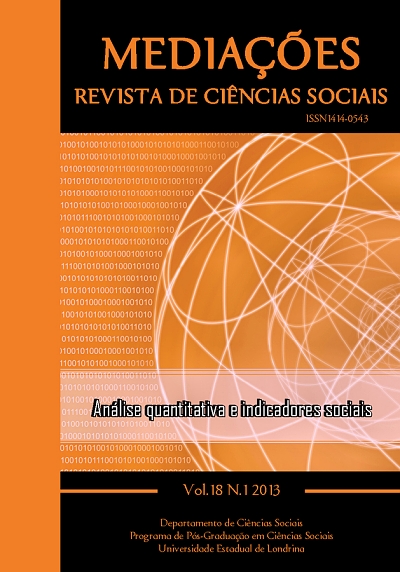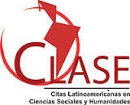Indicators of gender inequality in Brazil
DOI:
https://doi.org/10.5433/2176-6665.2013v18n1p83Keywords:
Gender inequality, Women empowerment, Social indicators, BrazilAbstract
Brazilian women achieved many partial victories in the twentieth century: they obtained the right to vote in 1932, but they were not able to surpass the prevailing existing 10% women participation in congress; they advanced in all levels of education, but they are still underrepresented in exact sciences and in research groups leadership; they increased participation rates in the labor market, but they still face occupational segregation, salary discrimination, and double working day; they achieved several victories in national legislation, but they are still victims of prejudice and discrimination. In terms of life expectancy, they live an average of seven years longer than men, and they are also the majority of population and electorate. They were able to reduce many gender inequalities and reverse others. However, despite having a woman as President, Brazil has still a long way to go to reach gender equity.Downloads
References
ALVES, José Eutáquio Diniz; MARTINE, George. Gênero e desenvolvimento: desafios para a integração e atualização do Cairo. In: CONGRESSO DA ALAP, 4., 2010, Havana. Anais... Havana:UNFPA, 2010.
ALVES, José Eutáquio Diniz; CORREA, Sônia. Igualdade e desigualdade de gênero no Brasil: um panorama preliminar, 15 anos depois do Cairo. 2009.
BELTRÃO, Kaizô Iwakami; ALVES, José Eustáquio Diniz. A reversão do hiato de gênero na educação brasileira no século XX. Cadernos de Pesquisa, São Paulo, v. 39, n. 136, p. 125-156, jan.- abr. 2009.
BRASIL. Ministério da Saúde. Indicadores e Dados Básicos. 2010. DISPONÍVEL EM: . Acesso em: 15 dez. 2012.
COMISSÃO ECONÔMICA PARA A AMÉRICA LATINA E O CARIBE – CEPAL. Informe de la décima Conferencia regional sobre la mujer de América Latina y el Caribe. In: CONFERENCIA REGIONAL SOBRE LA MUJER DE AMÉRICA LATINA Y EL CARIBE, 10, 2007, Quito
COMISSÃO ECONÔMICA PARA A AMÉRICA LATINA E O CARIBE – CEPAL. Qué tipo de estado? Que tipo de igualdade? In: CONFERÊNCIA REGIONAL SOBRE A MULHER DA AMÉRICA LATINA E DO CARIBE, 11., 2010, Brasília.
DUFLO, Esther. Women’s empowerment and economic development. National Bureau of Economic Research Working Paper, Cambridge, n. 17702, dec. 2011.
SCHWAB, Klaus. Global gender gap index. In: WORLD ECONOMIC FÓRUM, 2009, Davos.
GOLDIN, Claudia. The quiet revolution that transformed women’s employment, education, and family National Bureau of Economic Research Working Paper, Cambridge, n. 11953, jan. 2006.
INSTITUTO BRASILEIRO DE GEOGRAFIA E ESTATÍSTICA - IBGE. Pesquisa Nacional por Amostra de Domicílios. 2009.
INSTITUTO BRASILEIRO DE GEOGRAFIA E ESTATÍSTICA - IBGE. Pesquisa Nacional por Amostra de Domicílios. 2005.
INSTITUTO BRASILEIRO DE GEOGRAFIA E ESTATÍSTICA - IBGE. Censo Demográfico.
INSTITUTO BRASILEIRO DE GEOGRAFIA E ESTATÍSTICA - IBGE. Pesquisa Mensal de Emprego. 2010.
INTITUTO DE PESQUISA ECONÔMICA APLICADA – IPEA. Relatório Nacional de Acompanhamento – ODM. Brasília, mar. 2010.
INTITUTO DE PESQUISA ECONÔMICA APLICADA – IPEA. PNAD 2009 Primeiras análises: situação da educação brasileira - avanços e problemas. Brasília, 2010. (Comunicado nº 66).
ROSIN, Hanna. The end of men. Atlantic Magazine, Washington, jul.-aug. 2010.
SOARES, Cristiane; SABÓIA, Ana Lucia. Tempo, trabalho e afazeres domésticos: um estudo com base nos dados da PNAD 2001 e 2005. Rio de Janeiro: DPE/IBGE, 2007. (Texto para discussão, 21).
THERBORN, G. Sexo e poder: a família no mundo 1900-2000. São Paulo: Contexto, 2006.
UNITED NATIONS/ESA. World population prospects: the 2010 Revision.
Downloads
Published
How to Cite
Issue
Section
License
Copyright on articles published in Mediações belongs to the author(s): in the case of partial or entire republication of the original publication, we ask author(s) to indicate the original publication in the periodical.
Mediações uses the Creative Commons Attribution 4.0 International license, which allows Open Access, enabling any user to read, download, copy and disseminate its content so long as adequately referenced.
The opinions expressed by the author(s) are their sole responsibility.
































